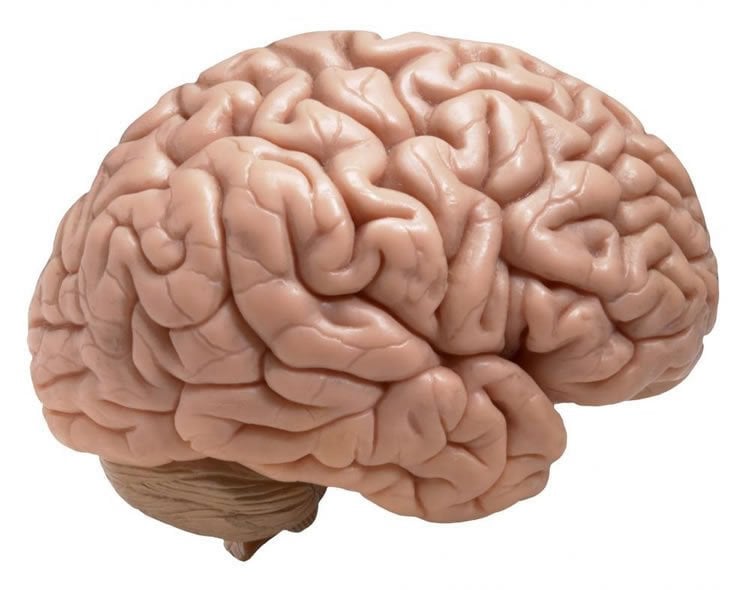Summary: Researchers have identified a mechanism that may explain what is commonly known as the Mozart Effect, where sound input is linked to developing cognitive function.
Source: University of Maryland School of Medicine.
Some expectant parents play classical music for their unborn babies, hoping to boost their children’s cognitive capacity. While some research supports a link between prenatal sound exposure and improved brain function, scientists had not identified any structures responsible for this link in the developing brain.
A new study by University of Maryland School of Medicine (UMSOM) scientists, along with colleagues from the University of Maryland College Park, is the first to identify a mechanism that could explain an early link between sound input and cognitive function, often called the “Mozart effect.” Working with an animal model, the researchers found that a type of cell in the brain’s primary processing area during early development, long thought to have no role in transmitting sensory information, may conduct such signals after all.
The results, which could have implications for the early diagnosis of autism and other cognitive deficits, were published recently in the Proceedings of the National Academy of Sciences.
“Our work is the first to suggest that very early in brain development, sound becomes an important sense,” said Amal Isaiah, assistant professor of otorhinolaryngology at UMSOM and one of the principal authors. “It appears that the neurons that respond to sound play a role in the early functional organization of the cortex. This is new, and it is really exciting.”
Working with young ferrets, Dr. Isaiah and Patrick Kanold, PhD, a professor of biology at University of Maryland College Park, observed sound-induced nerve impulses in subplate neurons, which help guide the formation of neural circuits in the same way that a scaffolding helps a construction crew erect a new building. This is the first time such impulses have been seen in these neurons. During development, subplate neurons are among the first neurons to form in the cerebral cortex–the outer part of the mammalian brain that controls perception, memory and, in humans, higher functions such as language and abstract reasoning.
The role of subplate neurons is thought to be temporary. Once the brain’s permanent neural circuits form, most subplate neurons disappear. Researchers assumed that subplate neurons had no role in transmitting sensory information, given their transient nature.
Scientists had thought that mammalian brains transmit their first sensory signals in response to sound after the thalamus, a large relay center, fully connects to the cerebral cortex. Studies from some mammals demonstrate that the connection of the thalamus and the cortex also coincides with the opening of the ear canals, which allows sounds to activate the inner ear. This timing provided support for the traditional model of when sound processing begins in the brain.
However, researchers had struggled to reconcile this conventional model with observations of sound-induced brain activity much earlier in the developmental process. Until Kanold, senior author of the paper, and his colleagues directly measured the response of subplate neurons to sound, the phenomenon had largely been overlooked.

“Previous research documented brain activity in response to sound during early developmental phases, but it was hard to determine where in the brain these signals were coming from,” Prof. Kanold said. “Our study is the first to measure these signals in an important cell type in the brain, providing important new insights into early sensory development in mammals.”
By identifying a source of early sensory nerve signals, the current study could lead to new ways to diagnose autism and other cognitive deficits that emerge early in development. Early diagnosis is an important first step toward early intervention and treatment.
The next step is to begin studying in more detail how subplate neurons affect brain development. There are many avenues of research: for instance, the researchers say that the neurons might play a role in some cognitive conditions such as autism.
Source: David Kohn – University of Maryland School of Medicine
Publisher: Organized by NeuroscienceNews.com.
Image Source: NeuroscienceNews.com image is in the public domain.
Original Research: Abstract for “Subplate neurons are the first cortical neurons to respond to sensory stimuli” by Jessica M. Wess, Amal Isaiah, Paul V. Watkins, and Patrick O. Kanold in PNAS. Published online November 7 2017 doi:10.1073/pnas.1710793114
[cbtabs][cbtab title=”MLA”]University of Maryland School of Medicine “Researchers Identify First Brain Cells That Respond to Sound.” NeuroscienceNews. NeuroscienceNews, 8 December 2017.
<https://neurosciencenews.com/auditory-neurons-asd-8143/>.[/cbtab][cbtab title=”APA”]University of Maryland School of Medicine (2017, December 8). Researchers Identify First Brain Cells That Respond to Sound. NeuroscienceNews. Retrieved December 8, 2017 from https://neurosciencenews.com/auditory-neurons-asd-8143/[/cbtab][cbtab title=”Chicago”]University of Maryland School of Medicine “Researchers Identify First Brain Cells That Respond to Sound.” https://neurosciencenews.com/auditory-neurons-asd-8143/ (accessed December 8, 2017).[/cbtab][/cbtabs]
Abstract
Subplate neurons are the first cortical neurons to respond to sensory stimuli
In utero experience, such as maternal speech in humans, can shape later perception, although the underlying cortical substrate is unknown. In adult mammals, ascending thalamocortical projections target layer 4, and the onset of sensory responses in the cortex is thought to be dependent on the onset of thalamocortical transmission to layer 4 as well as the ear and eye opening. In developing animals, thalamic fibers do not target layer 4 but instead target subplate neurons deep in the developing white matter. We investigated if subplate neurons respond to sensory stimuli. Using electrophysiological recordings in young ferrets, we show that auditory cortex neurons respond to sound at very young ages, even before the opening of the ears. Single unit recordings showed that auditory responses emerged first in cortical subplate neurons. Subsequently, responses appeared in the future thalamocortical input layer 4, and sound-evoked spike latencies were longer in layer 4 than in subplate, consistent with the known relay of thalamic information to layer 4 by subplate neurons. Electrode array recordings show that early auditory responses demonstrate a nascent topographic organization, suggesting that topographic maps emerge before the onset of spiking responses in layer 4. Together our results show that sound-evoked activity and topographic organization of the cortex emerge earlier and in a different layer than previously thought. Thus, early sound experience can activate and potentially sculpt subplate circuits before permanent thalamocortical circuits to layer 4 are present, and disruption of this early sensory activity could be utilized for early diagnosis of developmental disorders.
“Subplate neurons are the first cortical neurons to respond to sensory stimuli” by Jessica M. Wess, Amal Isaiah, Paul V. Watkins, and Patrick O. Kanold in PNAS. Published online November 7 2017 doi:10.1073/pnas.1710793114







